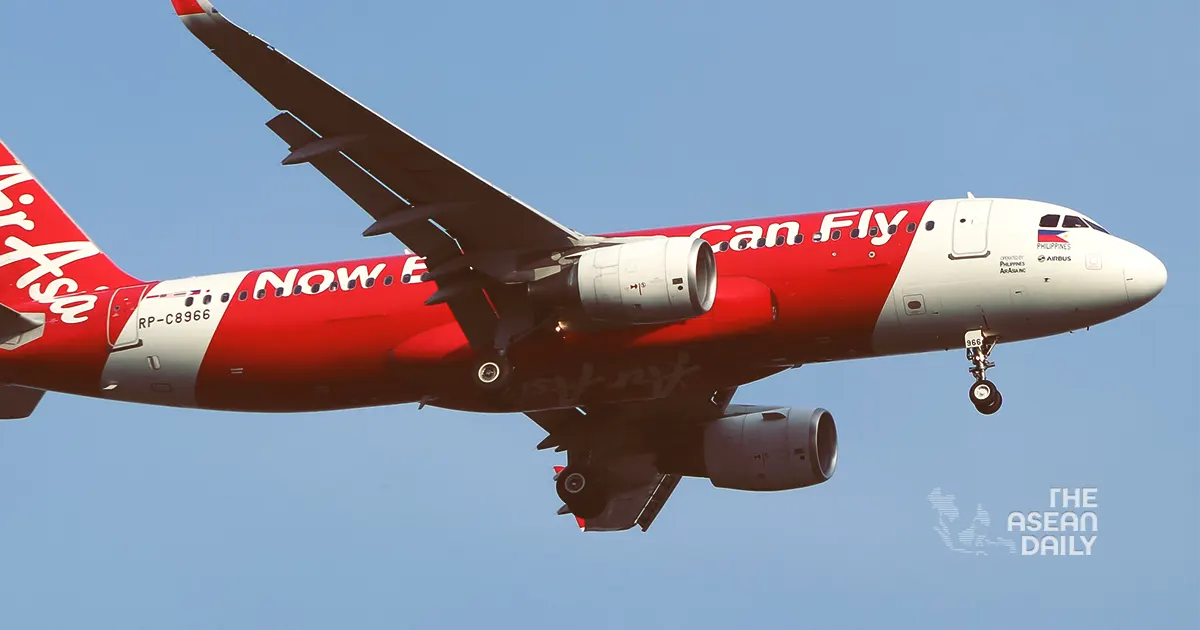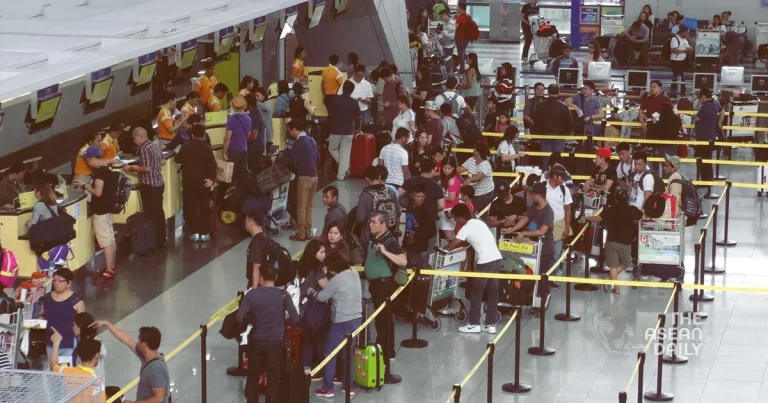5-10-2024 (MANILA) The Philippines’ aviation sector is facing significant challenges as the country’s major airlines reduce direct flights to China, citing dwindling demand from Chinese tourists. This downturn is attributed to escalating geopolitical tensions between Manila and Beijing, coupled with a recent ban on Chinese-operated online gambling establishments.
AirAsia Philippines, a subsidiary of Malaysia’s Capital A, has taken the most drastic step by suspending all its flights from Manila to China. This marks a stark contrast to its pre-pandemic operations when the carrier serviced seven Chinese cities from Manila in 2019. The airline gradually reduced its China-bound routes to just two by mid-2024 before ceasing all operations by August’s end.

Steve Dailisan, AirAsia Philippines’ head of communications and public affairs, explained the decision as a move “to optimise the fleet and prioritise other routes with stronger load factors.” He assured that passengers could still reach China through AirAsia’s other Southeast Asian hubs, emphasising that “China is an important route for AirAsia Philippines and we look forward to serving it again.”
Cebu Pacific, another major player in the Philippine aviation market, has also scaled back its China operations. The budget carrier has shelved plans to resume its Manila-Beijing flights in 2024, a route suspended in 2020 due to COVID-19 restrictions. Alexander Lao, Cebu Pacific’s president and chief executive, announced further reductions in flights to Guangzhou, Shanghai, Shenzhen, and Xiamen by the close of 2024, citing weakening demand.

“We will be down from maybe anywhere between five and seven flights a week, to just two destinations. And it’s probably because of softening demand in China,” Lao stated, noting that Chinese travellers are currently more focused on domestic tourism due to China’s economic slowdown.
Philippine Airlines, the country’s flag carrier, has not been immune to these trends. According to OAG Aviation, a global flight statistics provider, the airline has significantly reduced its flight frequencies from Manila to China, retaining “only a few routes, including Shanghai, Xiamen, and Quanzhou.”
While airlines primarily cite weak travel demand as the reason for these cutbacks, industry experts point to deeper underlying issues. Mayur Patel, OAG Aviation’s regional sales director, suggested that geopolitical tensions between the Philippines and China have played a crucial role in these changes, leading to stricter visa requirements for Chinese nationals.
The Philippines’ Department of Tourism (DOT) corroborated this view, stating that the “overall weakening demand in international travel from China has been exacerbated by the slowdown of its economy and the persisting geopolitical tensions between the two countries.”
The impact on Philippine tourism is significant. Prior to the pandemic, China was a major source of visitors, with over 1.7 million Chinese tourists in 2019. However, this number plummeted to 263,000 in 2023 and stood at just 130,574 by late April 2024.
Tensions between Manila and Beijing have escalated since President Ferdinand Marcos Jr adopted a more assertive stance on the South China Sea dispute upon taking office in 2022. Recent incidents, including Chinese vessels blocking Philippine supply ships and clashes between coast guard forces, have further strained relations.

Adding to these challenges, the Philippine government has imposed stricter visa requirements for Chinese nationals and announced a total ban on Philippine offshore gaming operators (Pogos) by the end of 2024, many of which cater to Chinese gamblers.
Political analyst Lucio Pitlo III, president of the Philippine Association for Chinese Studies, highlighted the potential long-term impacts of these developments. “Our neighbours already have visa-free arrangements for the Chinese. That puts our Philippine tourism at a disadvantage compared with our peers in Southeast Asia,” he noted.
As the Philippine government seeks to balance its economic interests with national security concerns, the tourism sector faces an uphill battle. The DOT acknowledged the decline in Chinese visitors as a “challenge” and is now focusing on strengthening travel promotions in other markets such as South Korea, the United States, Japan, India, Europe, and the Middle East.
Despite these setbacks, there remains hope for a potential thaw in relations. With China still the Philippines’ top trading partner, some experts, including Pitlo, advocate for reconsidering the visa policy on Chinese nationals to improve relations and potentially revive the crucial tourism sector.




